Overview: Grover Tuners
Albert Dean Grover began producing tuning machines for banjos and guitars in the late 1800s. By the 1920s Grover’s tuners were being used on guitars by companies like Martin and Gibson and by the early 1950s Grover was seen as one of the industry leaders. Despite all that, Rickenbacker had never had much of a relationship with the company.
That would change after F.C. Hall’s 1953 purchase of Rickenbacker. For the next thirty or so years the companies would have an on again/off again relationship, and over that period Grover tuners would grace multiple Rickenbacker models as OEM fitments. While their relatively rarity makes them look incongruous when you come across them today, they do have a place in Rickenbacker history and so today we’re gonna run through it. So buckle up and let’s talk Grover tuners!
Now I shouldn’t have to say it, but there are no absolutes when it comes to Rickenbacker. Will you find guitars that “should” have Grovers equipped with Klusons or Schallers or something else—and vice versa? Yeah. You will. What I’m discussing are merely “guidelines”. There are almost always exceptions to the rules!
The first two “modern” Rickenbacker guitars—1954’s Combo 600 and 800—featured what were at the time “state of the art” Kluson Deluxe tuners. While it may seem strange today to think of the Kluson Deluxe as “technologically advanced”, when it launched in 1947 the Kluson Deluxe was the first “closed back” tuner on the market and would go on to dominate the market. It would in fact be the primary Rickenbacker guitar tuner for almost thirty years.
Thr third Rickenbacker model did not feature the “fancy” Klusons, however. Upon its launch in 1956, the Combo 400 featured Grover Sta-Tite tuners.

With their pre-war open back design and cloverleaf buttons, the Grovers were old fashioned but reliable…and affordable. Which fit well with a more entry-level offering like the Combo 400.
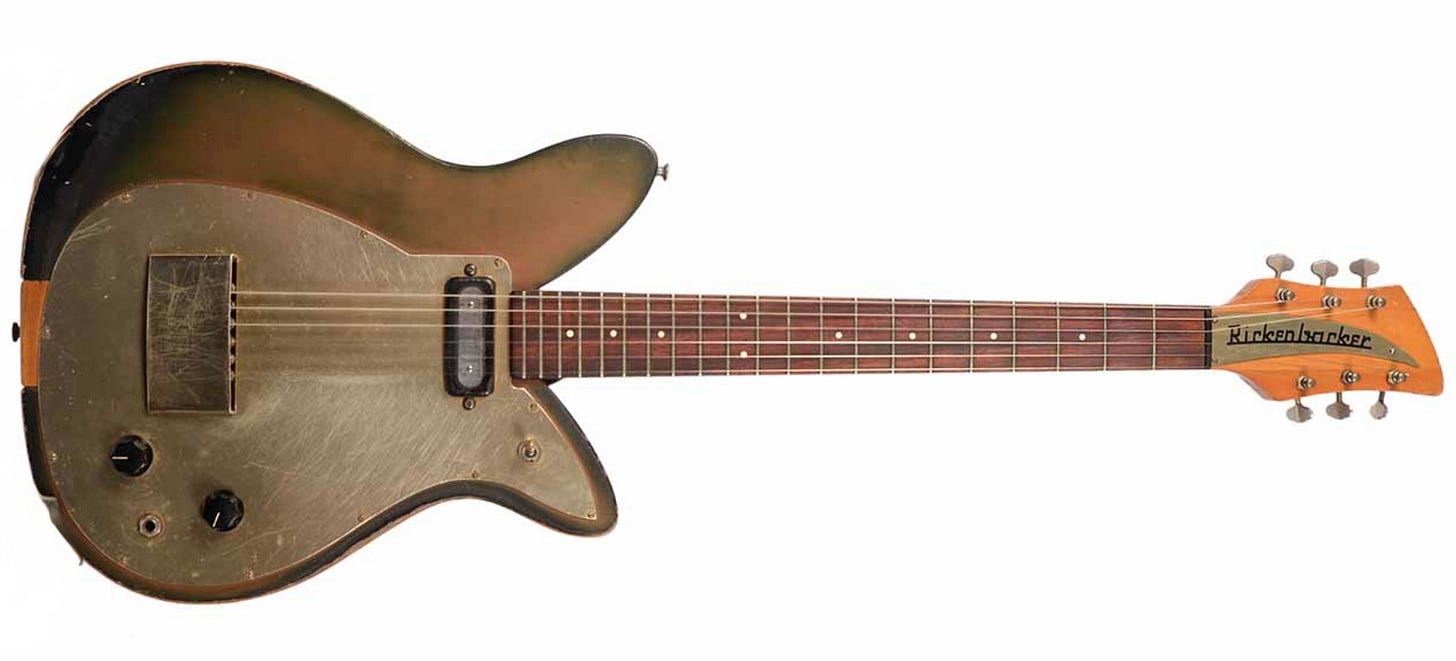
When the two pickup 450 joined the line in 1957, it too would be equipped with the Grover Sta-Tites.

If you think this would establish a pattern of Kluson Deluxe tuners on higher-end guitars, Grover Sta-Tites on entry level and “student” instruments…guess again. 1957’s short-scale student models 900, 950, and 1000 all came equipped with Kluson Deluxes. Go figure!
So it may be a bit of a surprise to learn that 1958’s short-scale Capris launched with Grover Sta-Tites. Yes, including THAT 1958 325 Capri.

Some early/prototype full scale Capri models featured the Grovers as well, but by the end of the year production standardized around Kluson Deluxes.
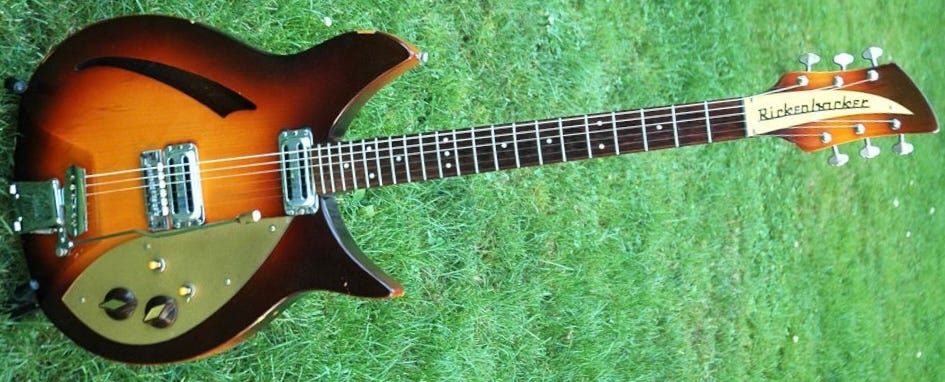
But the Grovers would last on the short-scale Capris throughout 1958 and 1959, with only the handful of final guitars produced in 1960 featuring Kluson Deluxes.
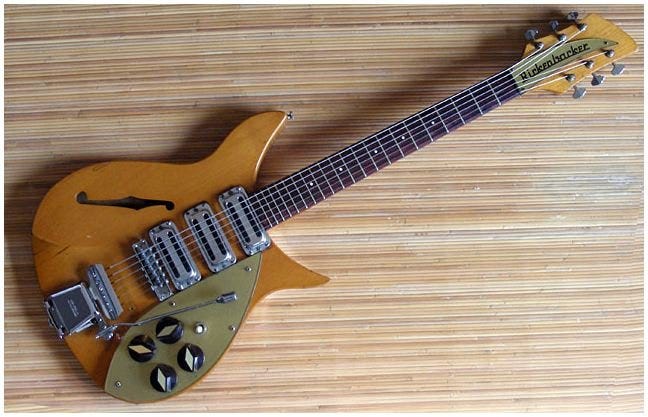
From late 1957 to early 1958 the Combo 400 and 450 transitioned from the older “tulip” body shape into the modern “cresting wave” shape—with a brief “half-tulip” detour for the 450.

With the change in shape came a new model number for the single pickup Combo 400. In early 1958 the first examples of the new 425 featured Grover Sta-Tites, but relatively quickly transitioned to white plastic bean button Kluson Deluxes.

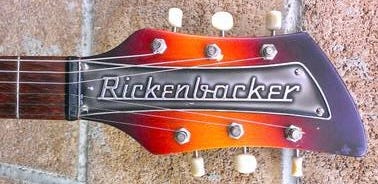
The 450, however, would continue to feature the Grovers for all of 1958—it was only in early 1959 that it would transition to Kluson Deluxes.
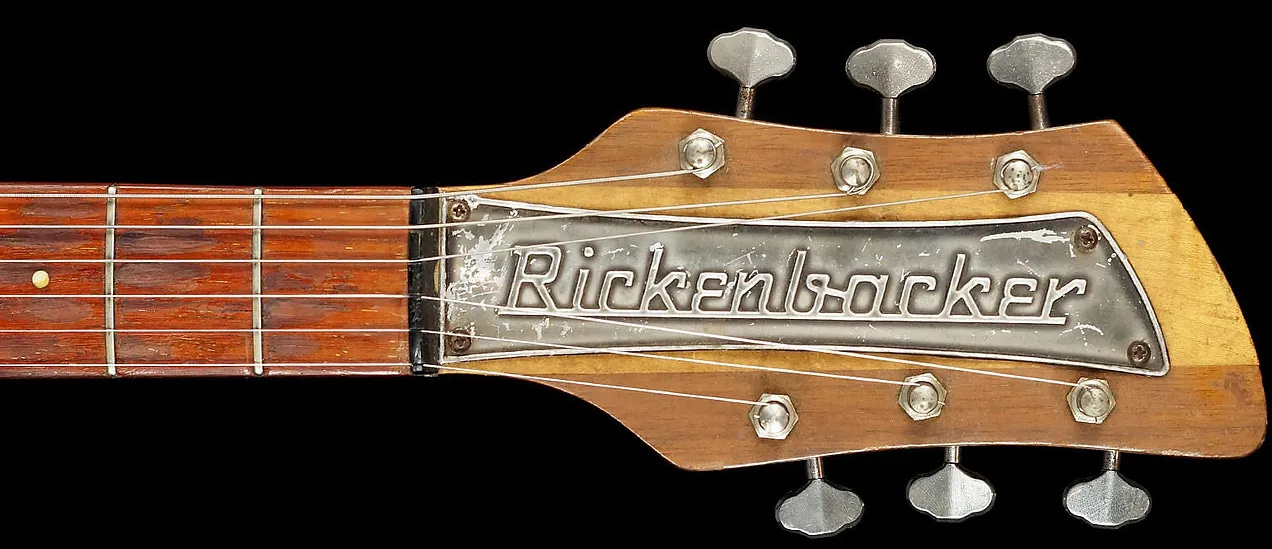
Which means that, funnily enough, the “last” Rickenbackers to feature the Grover Sta-Tites—lasting all the way until the end of 1959–were the short-scale Capri models.
Once 1960 rolled around, all Rickenbackers would wear Kluson Deluxe tuners with either white plastic or nickel “bean” buttons. While Van Ghent tuners would appear on some models during the early to mid 1960s—mostly on “special” or “show” models—Kluson’s dominance would be complete for almost ten years. But come 1969 Grover tuners would once again grace Rickenbacker headstocks—albeit in a very different place!
While Kluson had some competition on the “guitar” side of the Rickenbacker business, they had total domination on the bass side. Admittedly, the volume was much smaller, but from the first 1957 prototypes all the way to 1969 Rickenbacker basses had only ever worn Kluson tuners.


From 1957 to 1961, the 4000 bass and 4001 prototypes had utilized the frankly gargantuan Kluson 548 tuners. In 1963 they transtioned to the 536, which had a much smaller footprint. But the footprint would get much smaller again in May, 1969 when all basses switched to the Grover Slimline.

The Slimline tuner had a two piece pressure-fit sealed back and a small footprint. Although they later received an unfortunate reputation—see our article on “exploding wavy Grovers” to learn more—that took time to appear, and apart from that design weakness the Slimlines were pretty solid tuners.
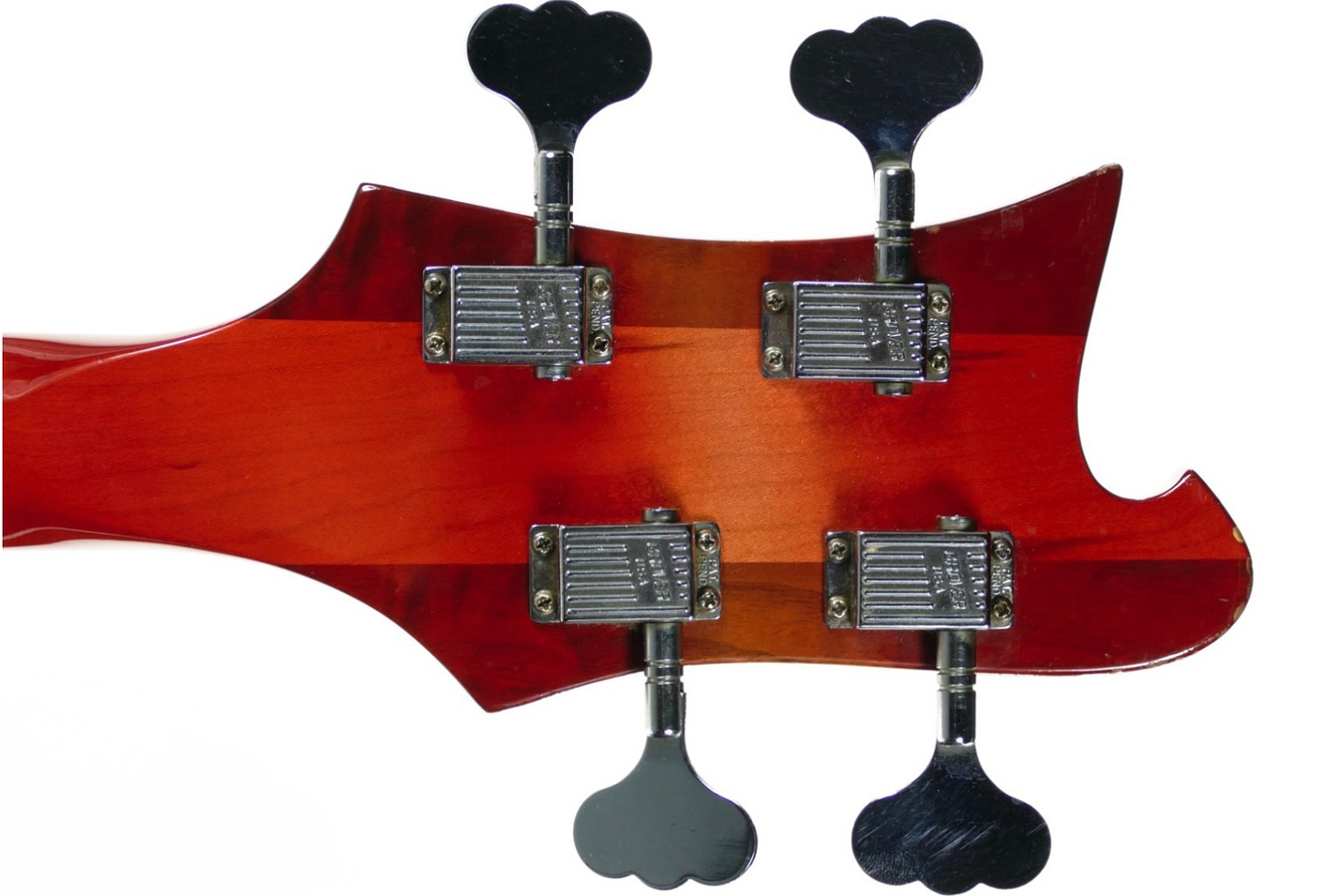
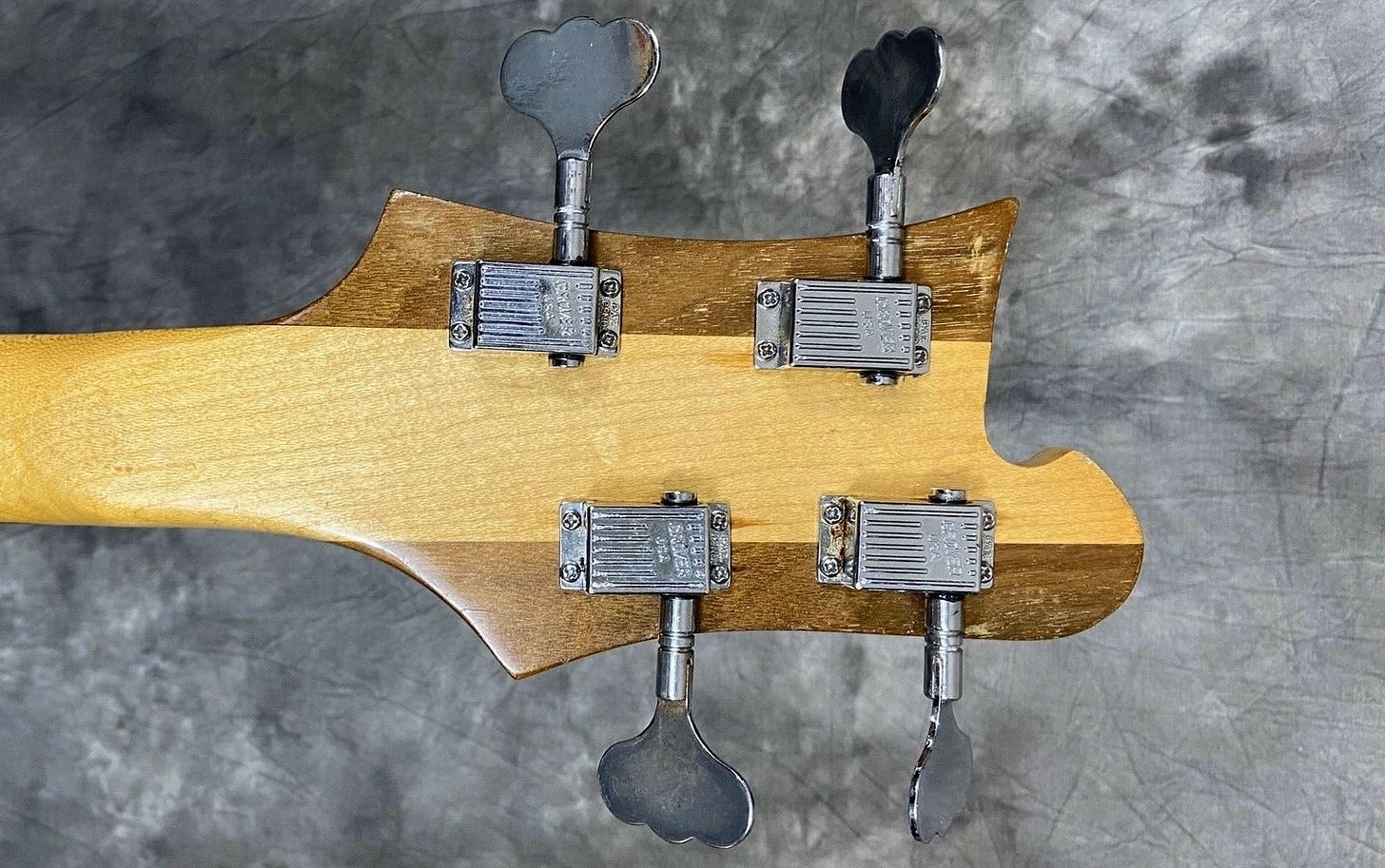
So why the switch? There’s no real way of knowing at this point. I have a theory that the dates kinda halfway support that goes like so: Rickenbacker was working on the short-lived 21-fret 4001 at around the same time. If you look at the pictures further above, even the “smaller” Kluson 538s Rickenbacker was using took up a lot of space on the back of the headstock, and the headstock had to be smaller to get the extra fret out of the same neck blank (about 1/2”). So they wanted a tuner that took up less real estate, and the Slimline fit the bill. Like I said, it’s a theory!
From 1969 to June/July 1972 the tuners had flat cloverleaf keys like you see above. But in mid 1972 the the “ears” of the tuning keys got bent slightly in opposite directions, transforming the keys from flat stamped units to a “wavy” or “S” shape. Thus the “wavy Grovers” nickname you see thrown around.
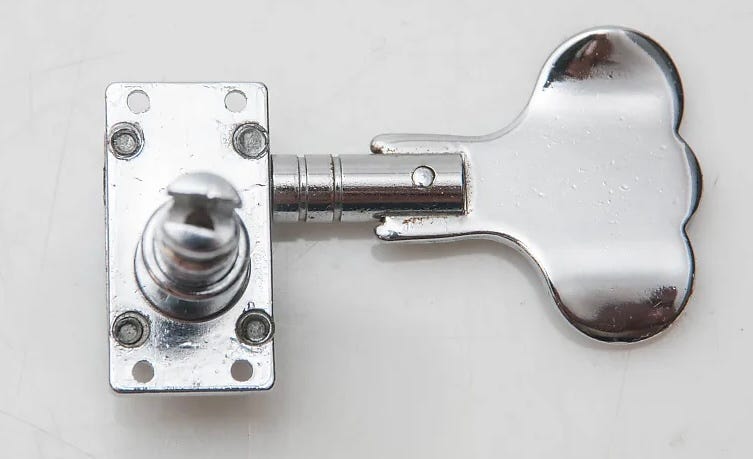
The Grover Slimline would be used until July, 1974 when they returned to the Kluson 538. Again, we have no idea why they made the change back. But this did not leave Rickenbacker with no Grover equipped guitars, because a different Grover tuner had shown up on the 360 in September 1971.

As one of the many early 1970s attempts to update and upgrade the 360 (which you can read about here), Rickenbacker upgraded the former “state of the art” but now aging Kluson Deluxes with the current “state of the art” sealed Grover Rotomatics in mid 1971.
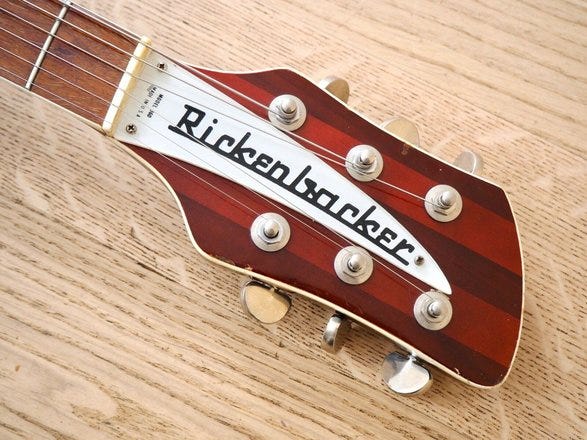
The Grovers came with large bushings—larger than the Klusons they replaced. So much larger, in fact, that the headstock had to be redesigned to hold them—leading to the so-called “Gumby” headstock. Don’t believe me about the size? Here those Grovers are on the older “vintage” headstock. They just barely fit!
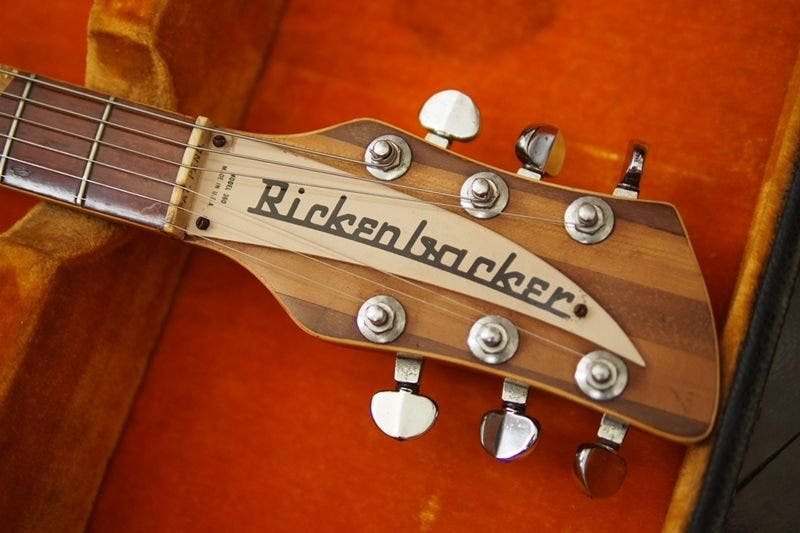
We need to talk a minute on the specific Rotomatics Rickenbacker used. At the time there were two distinct design “families” for what we refer to as “Rotomatics” today. I have been unable to definitively identify specific model numbers—you’ll see both 102 and 103 applied to both varieties—and I’ve also seen the “flavor” Rickenbacker used referred to as “Futuras”. What’s right? I just don’t know.
That said there is one significant difference that clearly sets the two families apart. Without getting too technical, the far more common version was a one piece sealed unit. Look, here’s the back of a more traditional “milk bottle” 102 Rotomatic you might find on an old Les Paul:
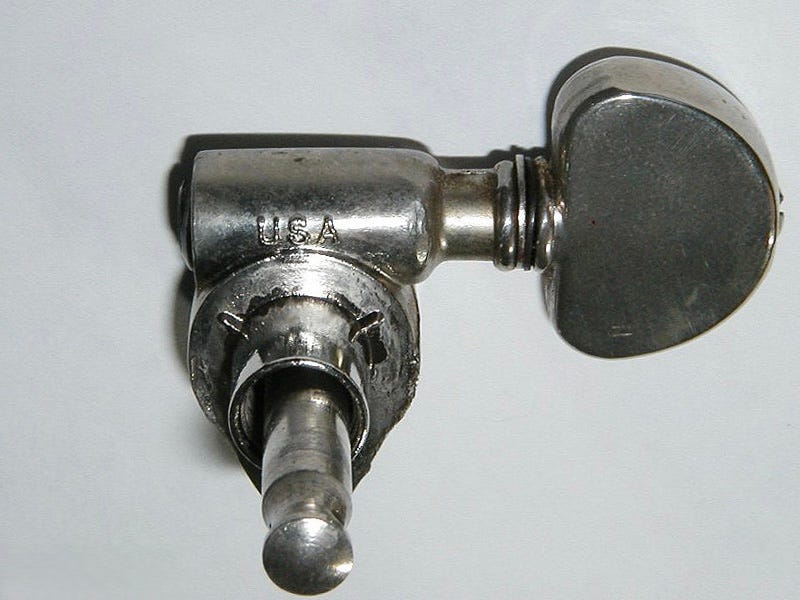
And here’s a more modern example:
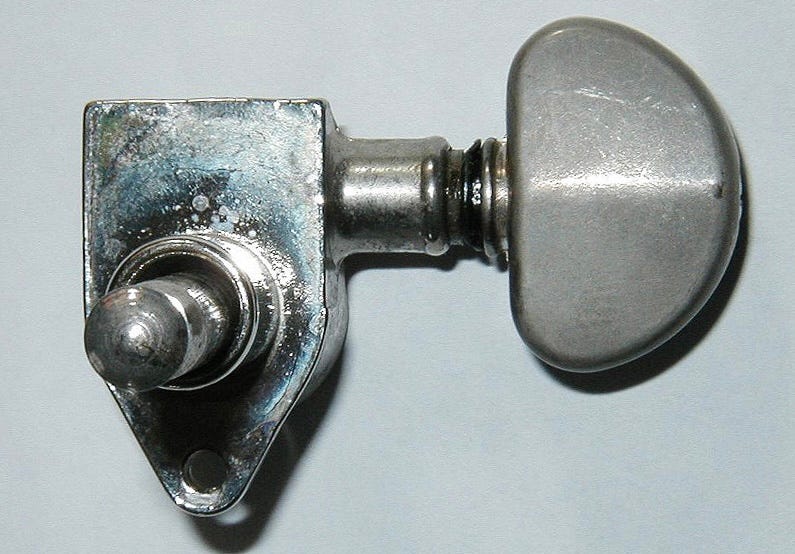
In both cases the entire tuner housing is a one piece casting. The version Rickenbacker used, on the other hand, was a two piece unit with a pressure-fit back just like the Slimline bass tuners!

This version of the Rotomatic is MUCH less common than the one piece version. So why did Rickenbacker choose it? Was it “better” than the one-piece tuners? Cheaper? I honestly don’t know. But they ARE different, and they are what you will find on Rickenbackers from this era.
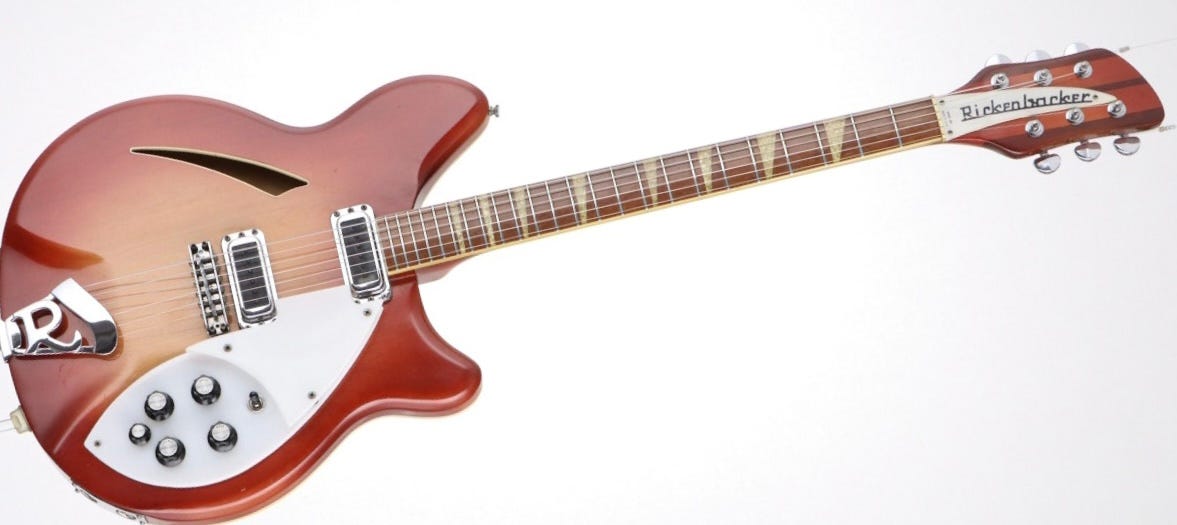
Rotomatics would go on to appear on the 481 and the six string neck of the 362/12–the twelve string neck got Kluson Deluxes!—when they launched in 1974, and Grovers would remain the standard fitment on the 360 guitars until the paddle headstock era began in 1985.
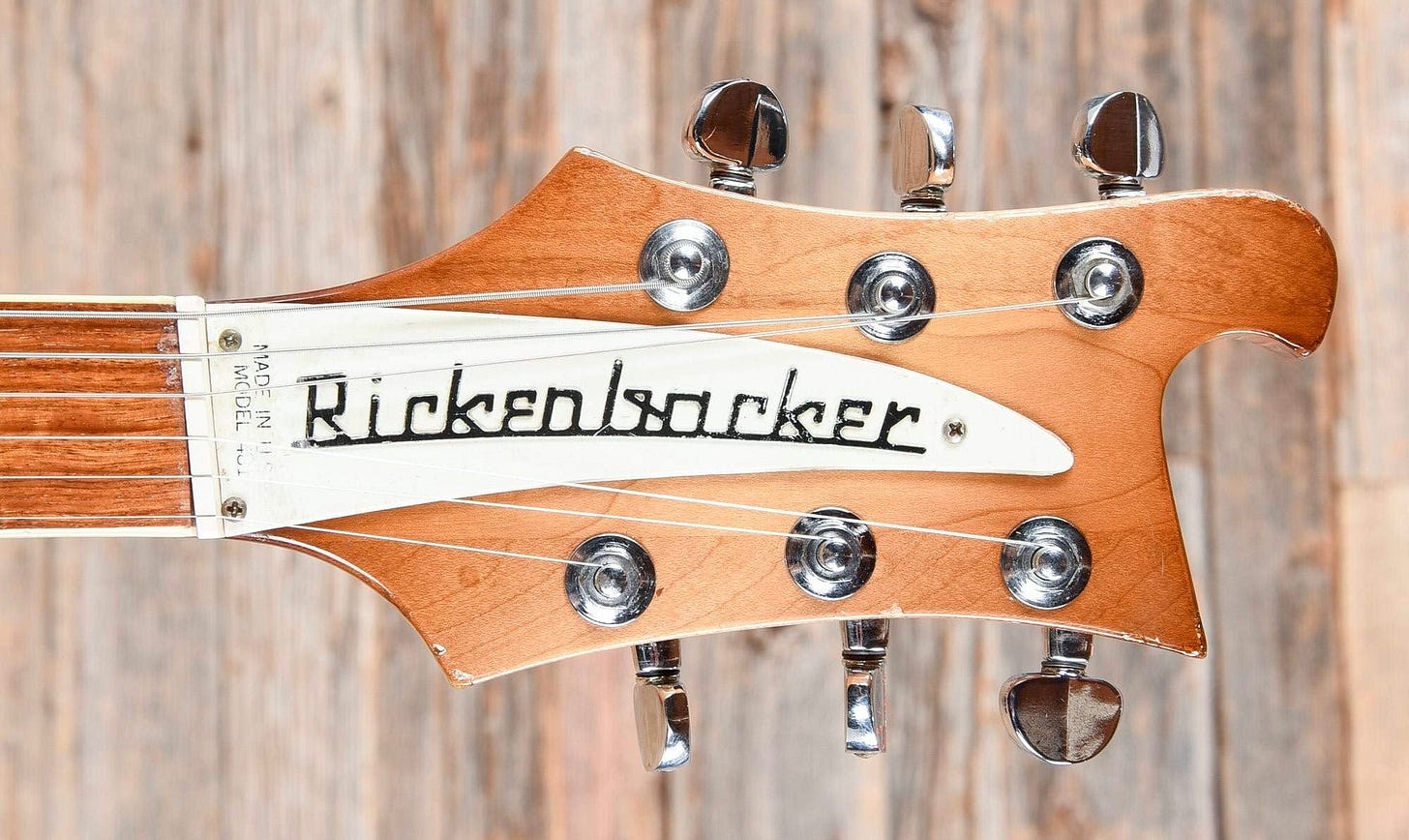
We’ll come back to that transition in a minute, but before we do we need to talk about how Grover became Rickenbacker’s ONLY tuner provider in 1982. It wasn’t by design!
Things had not been going well for Kluson since the late 60’s. Competitors like Grover and Schaller and Gotoh had kept improving their products, and Kluson had not. By the early 1980s Rickenbacker was one of their largest remaining customers. And so when John Kluson died in late 1981 and no buyer expressed interest in the company, the decision was made by the family to close the doors. Which left Rickenbacker in a bit of a bind as Kluson was still their primary guitar and bass tuner provider.
At the time, Grover made a guitar tuner in the same product line as the “wavy Grover” bass tuner with a not dissimilar footprint to the Kluson—and similar “bean” tuner heads.

And so it was that the “Slimline” or “box Grovers” began appearing on all guitars that had been equipped with Kluson Deluxes in mid 1982. From the front of the guitar, you can’t tell the difference. From the rear you absolutely can, as shown below.
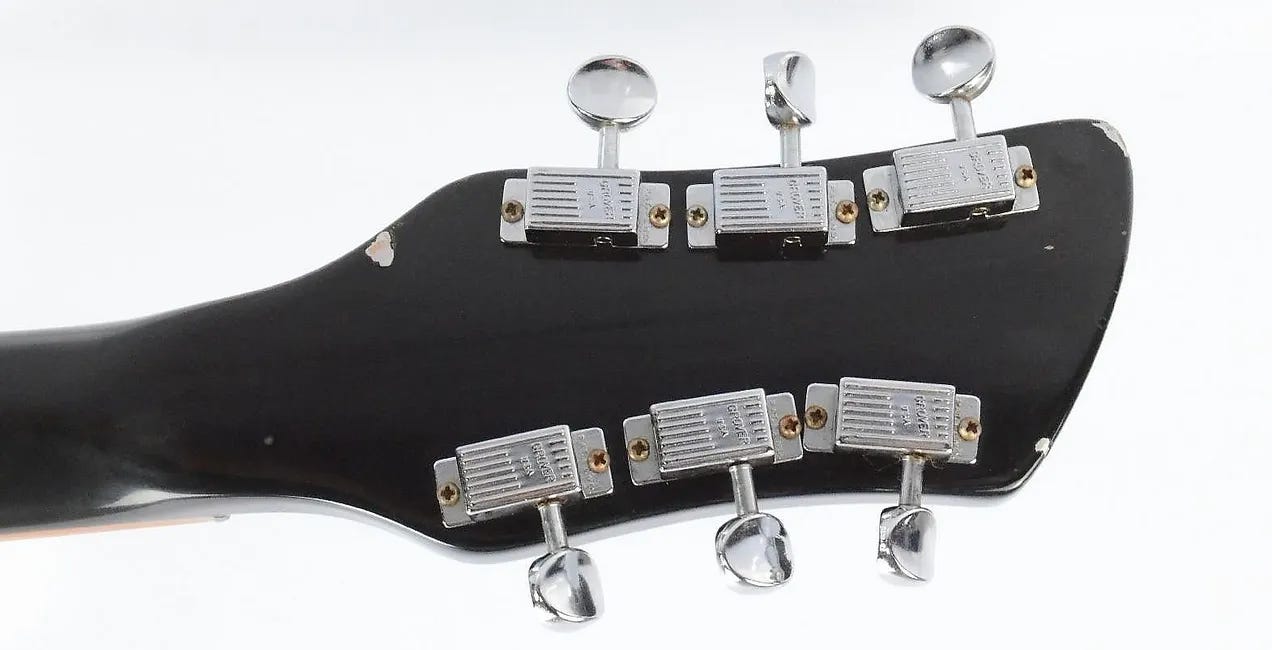
By the end of 1982–as the Klusons ran out—the Slimline became the only tuner on all guitars not already equipped with Grover Rotomatics.
Well, almost all. Grover didn’t make Slimlines with the longer posts the “side” tuners on 12-string guitars required, but they did make long post Rotomatics. And so while the 12–string 360 had never gotten the Rotomatics its 6-string brother had, it along with all other 12-string guitars joined the Rotomatic club during this period—albeit with small “button” keys because the regular “kidney bean” keys wouldn’t fit!
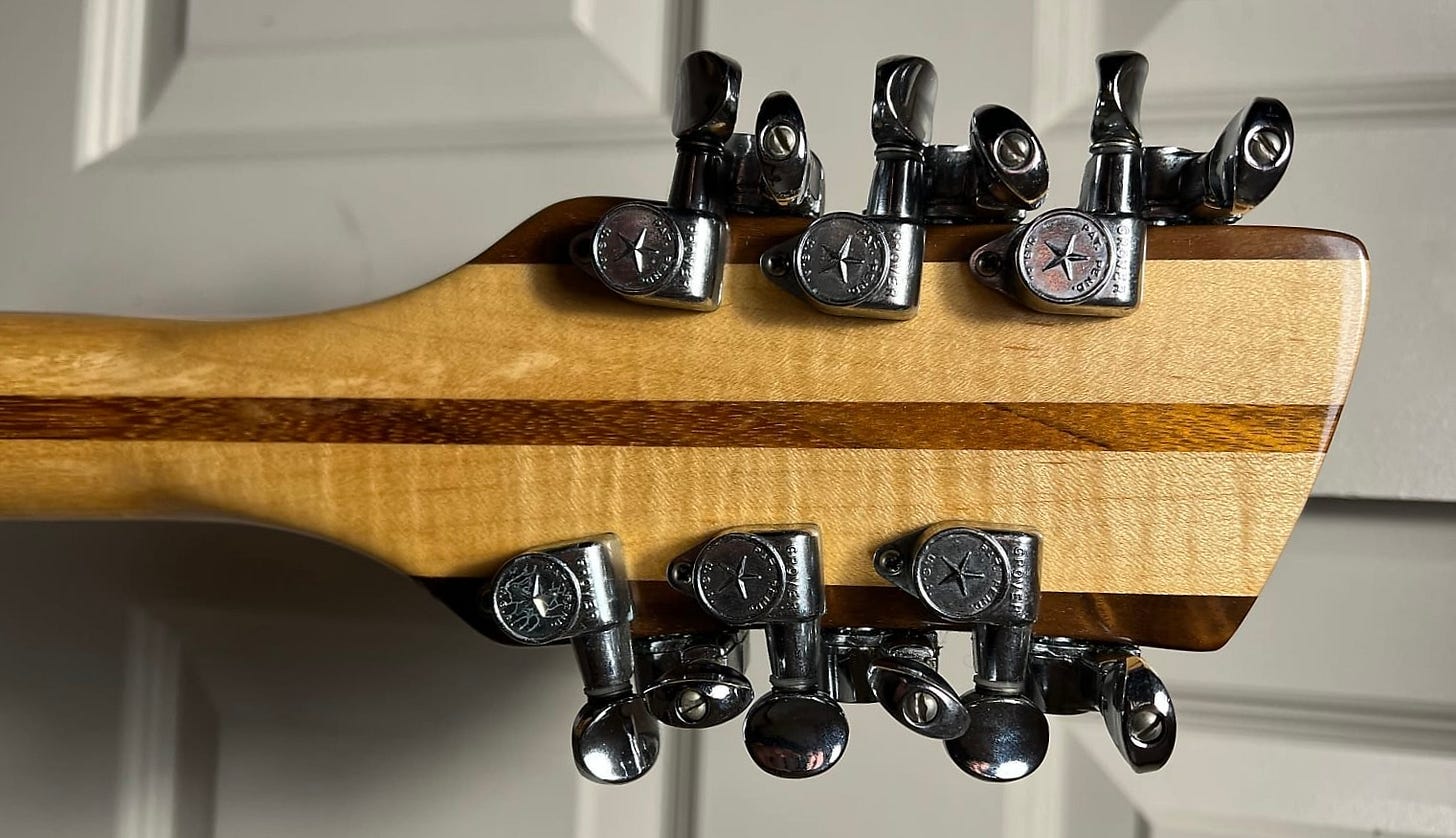
You’ll note the “star back” tuners this guitar wears—but they’re still the two-piece pressure-fit Rotomatics, albeit with a slightly different wrapper.
I should point out that Rickenbacker “held back” a small stash of Kluson Deluxes to be used on the proto-reissue B-Series guitars during this period. So not EVERYTHING had Grover tuners!
Around early 1984 Rickenbacker changed from the two-piece Rotomatic version to the more common one piece unit. My guess—given both how hard it is to find the Rickenbacker version today and the fact that they are no longer produced—is that they were discontinued due to low demand. That’s just a guess—but I’d wager it’s a pretty good one.

Basses also needed a new solution due to Kluson’s demise, and the bass Slimline was an easy answer. And so, after an eight year absence, Grover Slimline bass tuners returned to 4001 and 4003 headstocks in mid to late 1982.
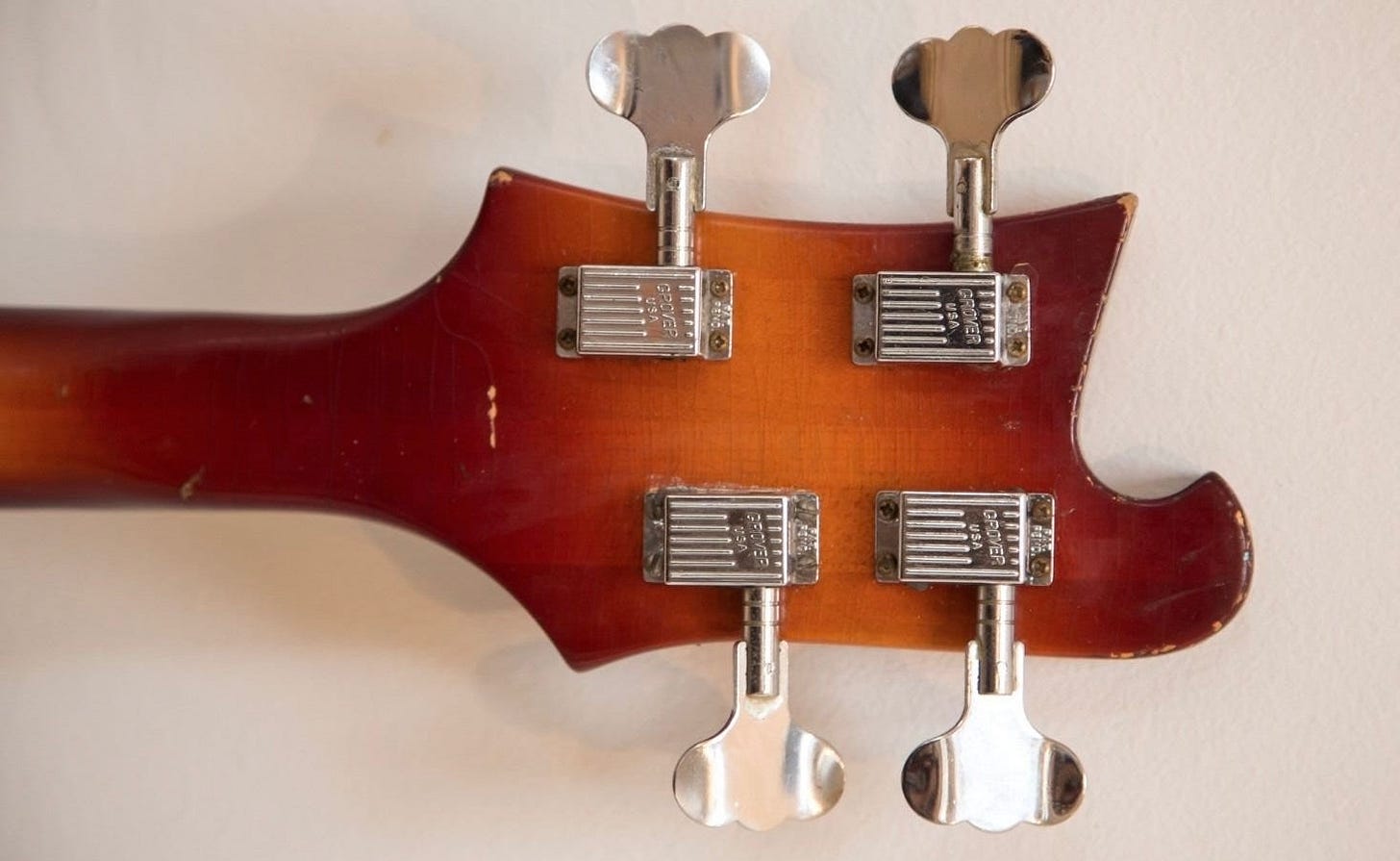
Another crisis struck in late 1983 when Grover discontinued the Slimline range of products (which, given their similar construction, is another fact in favor of my theory about Rickenbacker’s Rotomatic version being discontinued at roughly the same time!). Rickenbacker had begun experimenting with Schaller tuners on the 4002 in 1977, with M4 tuners being equipped as standard on the super deluxe model, and by August of 1983 Kluson 536 copy “BM” tuners made by Schaller began appearing on the 4003.
Rickenbacker had been working with Schaller for a guitar solution as well—which would end up being the Mini M6 tuner—but they weren’t quite ready to make the change when they exhausted their stock of Grover Slimlines. And so for the last few months of 1983 and all of 1984, ALL 6-string guitars came equipped with Grover Rotomatics—even if they just barely fit!
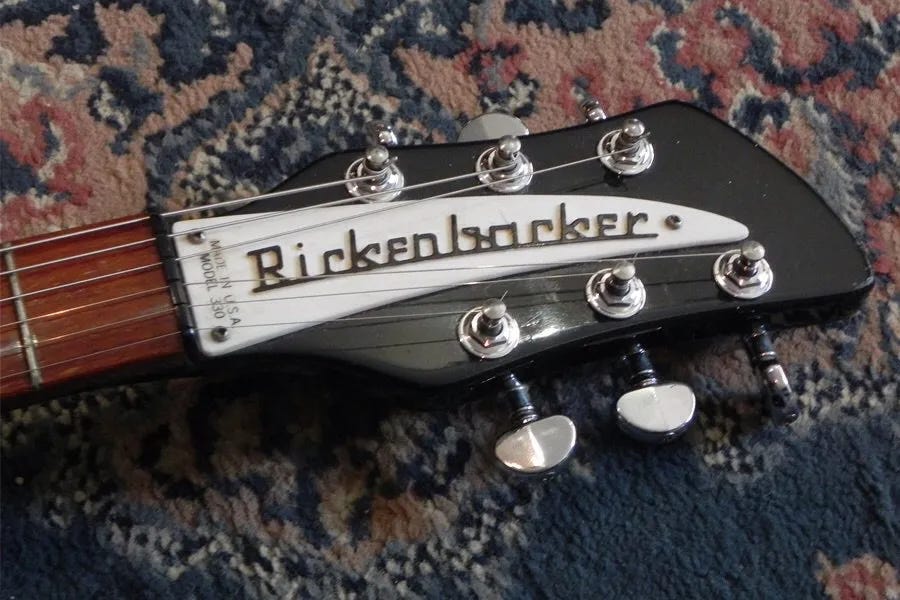
In order to better fit the Schaller M6s—whose bushings were the same size as the Grover Rotomatics—Rickenbacker introduced the new “paddle headstock” for all non-reissue 6-string guitars in late 1984. Despite being designed for the Schallers, a handful of paddle headstock guitars with Rotomatics would be produced in late 1984.
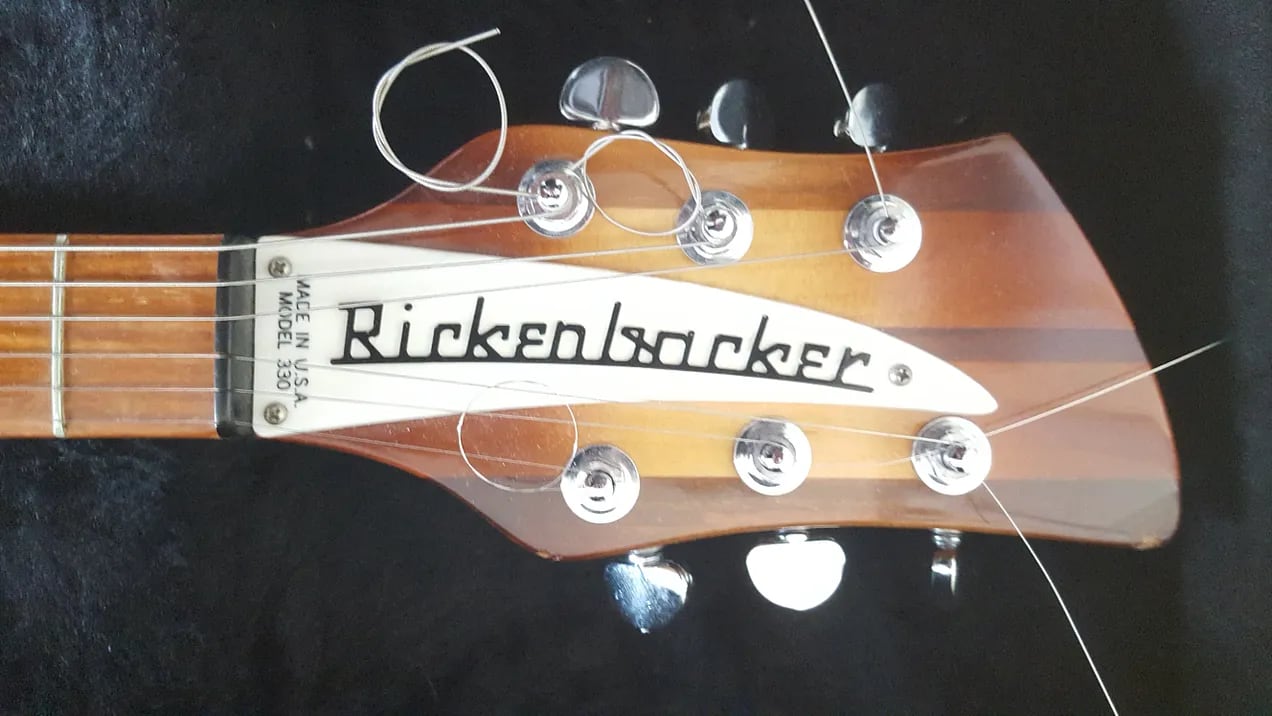
In early 1985 the Schallers would replace the Grovers—with one holdover. 1984 was the beginning of the Black Hardware/Black Trim era, and at the time Schaller did not offer black M6 tuners. So until they did—in March/April 2026–BH/BT guitars continued to feature black Rotomatic tuners.

When the black Schallers arrived in early 1996…that was the end for Grover and Rickenbacker. No new Rickenbacker guitars since have come equipped with Grovers since.
(And before anyone asks, the 325C58 was fitted with “Ric-Tite” branded Sta-Tite copies over its 2002-2010 run)
There’s a ton more to learn at rickenbacker101.com! We even have a handy site map to show you what we’ve already covered. Don’t see what you’re looking for? Drop it in the comments and we’ll add it to the queue!


My 1990 Rickenbacker Mapleglo 620BH/BT has the black Schallers. The article implies they were used starting in early 1996?